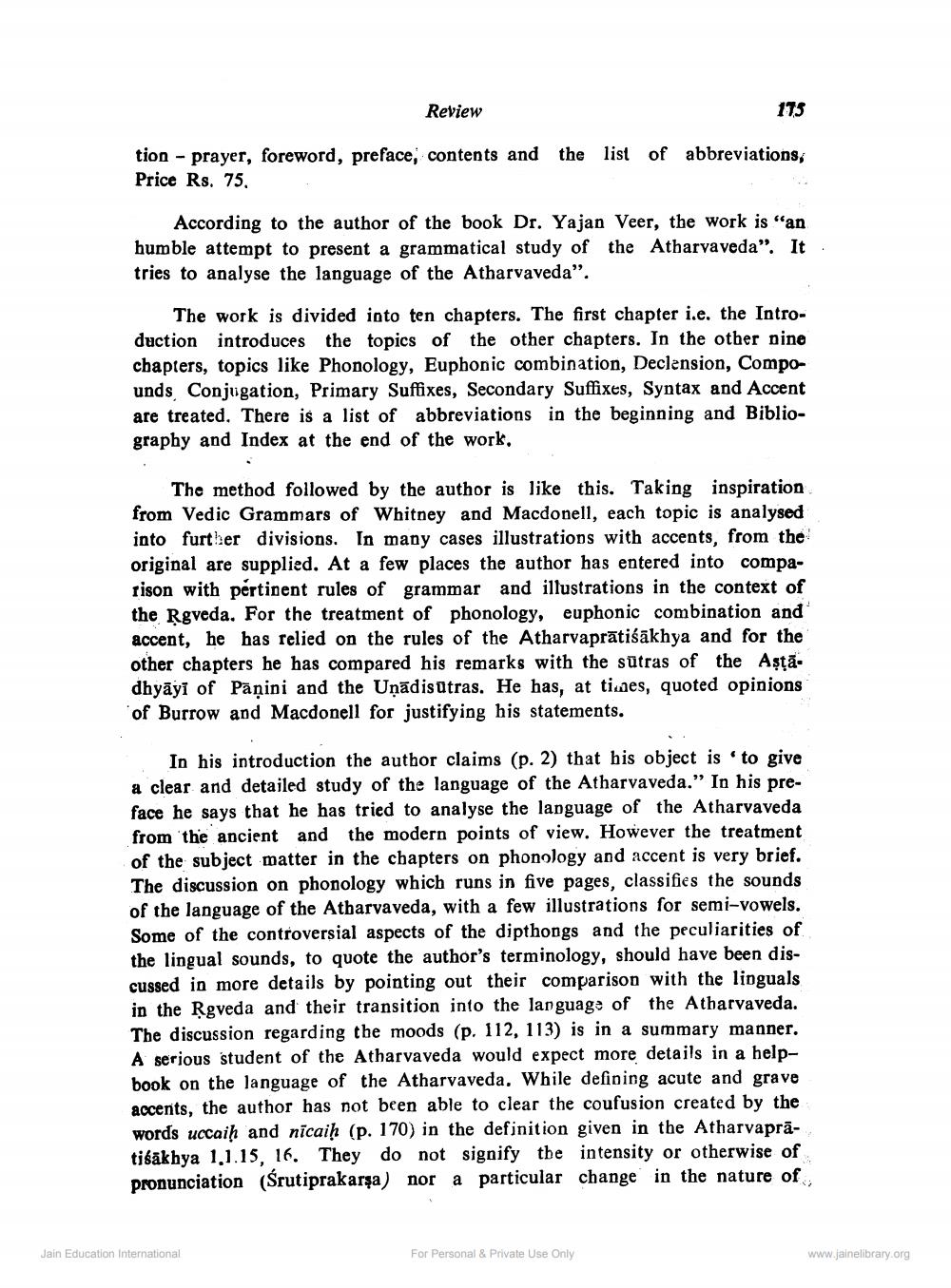________________
Review
175
tion - prayer, foreword, preface, contents and the list of abbreviations, Price Rs. 75.
According to the author of the book Dr. Yajan Veer, the work is “an humble attempt to present a grammatical study of the Atharvaveda". It. tries to analyse the language of the Atharvaveda".
The work is divided into ten chapters. The first chapter i.e. the Introduction introduces the topics of the other chapters. In the other nine chapters, topics like Phonology, Euphonic combination, Declension, Compounds, Conjugation, Primary Suffixes, Secondary Suffixes, Syntax and Accent are treated. There is a list of abbreviations in the beginning and Bibliography and Index at the end of the work.
The method followed by the author is like this. Taking inspiration from Vedic Grammars of Whitney and Macdonell, each topic is analysed into further divisions. In many cases illustrations with accents, from the original are supplied. At a few places the author has entered into comparison with pertinent rules of grammar and illustrations in the context of the Rgveda. For the treatment of phonology, euphonic combination and accent, he has relied on the rules of the Atharvaprātiśākhya and for the other chapters he has compared his remarks with the sutras of the Așțădhyāyī of Pāņini and the Uņādisutras. He has, at times, quoted opinions of Burrow and Macdonell for justifying his statements.
In his introduction the author claims (p. 2) that his object is to give a clear and detailed study of the language of the Atharvaveda.” In his preface he says that he has tried to analyse the language of the Atharvaveda from the ancient and the modern points of view. However the treatment of the subject matter in the chapters on phonology and accent is very brief. The discussion on phonology which runs in five pages, classifies the sounds of the language of the Atharvaveda, with a few illustrations for semi-vowels. Some of the controversial aspects of the dipthongs and the peculiarities of the lingual sounds, to quote the author's terminology, should have been discussed in more details by pointing out their comparison with the linguals in the Rgveda and their transition into the language of the Atharvaveda. The discussion regarding the moods (p. 112, 113) is in a summary manner. A serious student of the Atharvaveda would expect more details in a helpbook on the language of the Atharvaveda, While defining acute and grave accents, the author has not been able to clear the coufusion created by the words ucсaih and nicaih (p. 170) in the definition given in the Atharvaprātiśākhya 1.1.15, 16. They do not signify the intensity or otherwise of pronunciation (Śrutiprakarsa) nor a particular change in the nature of
Jain Education International
For Personal & Private Use Only
www.jainelibrary.org




